Three Emperors’ League Worksheets
Do you want to save dozens of hours in time? Get your evenings and weekends back? Be able to teach about the Three Emperors’ League to your students?
Our worksheet bundle includes a fact file and printable worksheets and student activities. Perfect for both the classroom and homeschooling!
Resource Examples
Click any of the example images below to view a larger version.
Fact File
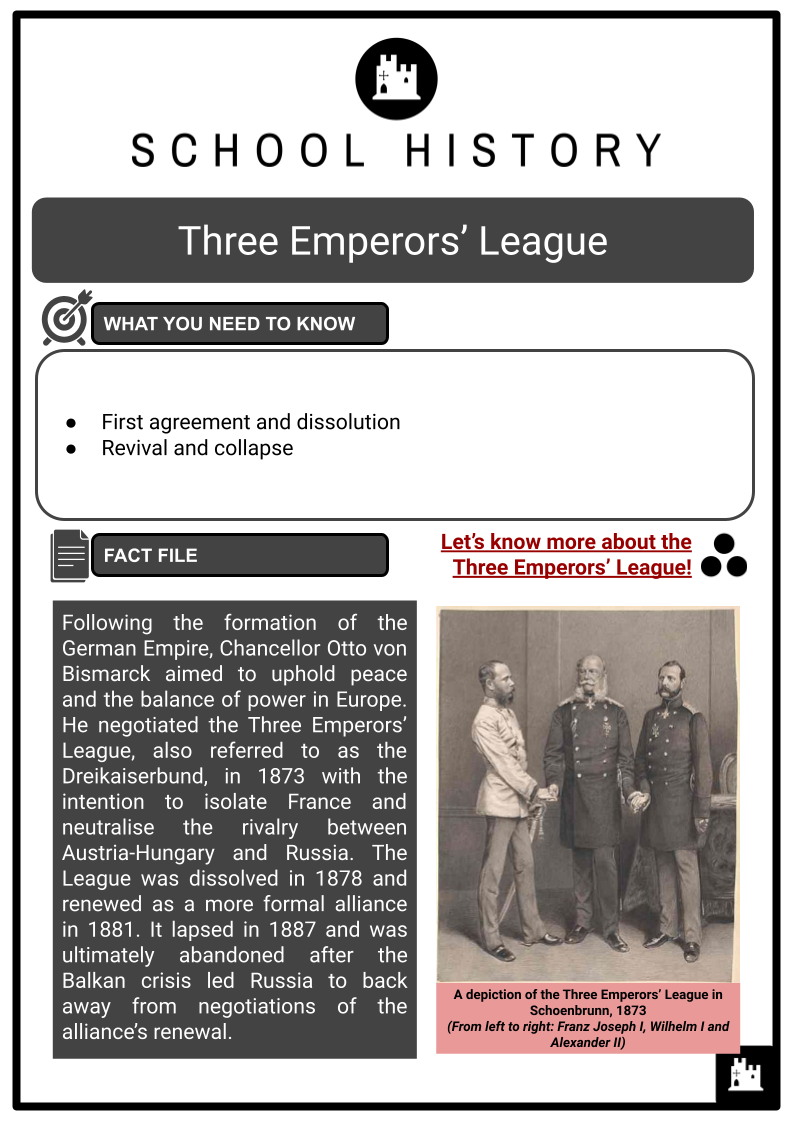
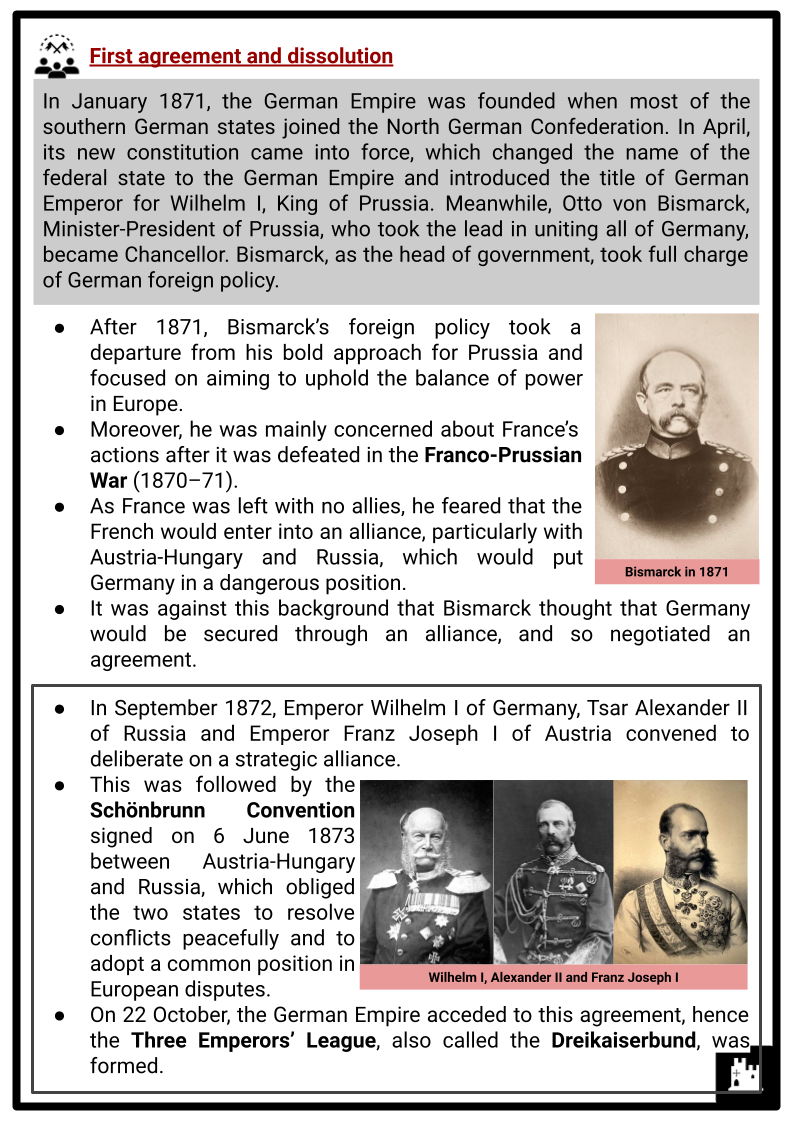
Student Activities
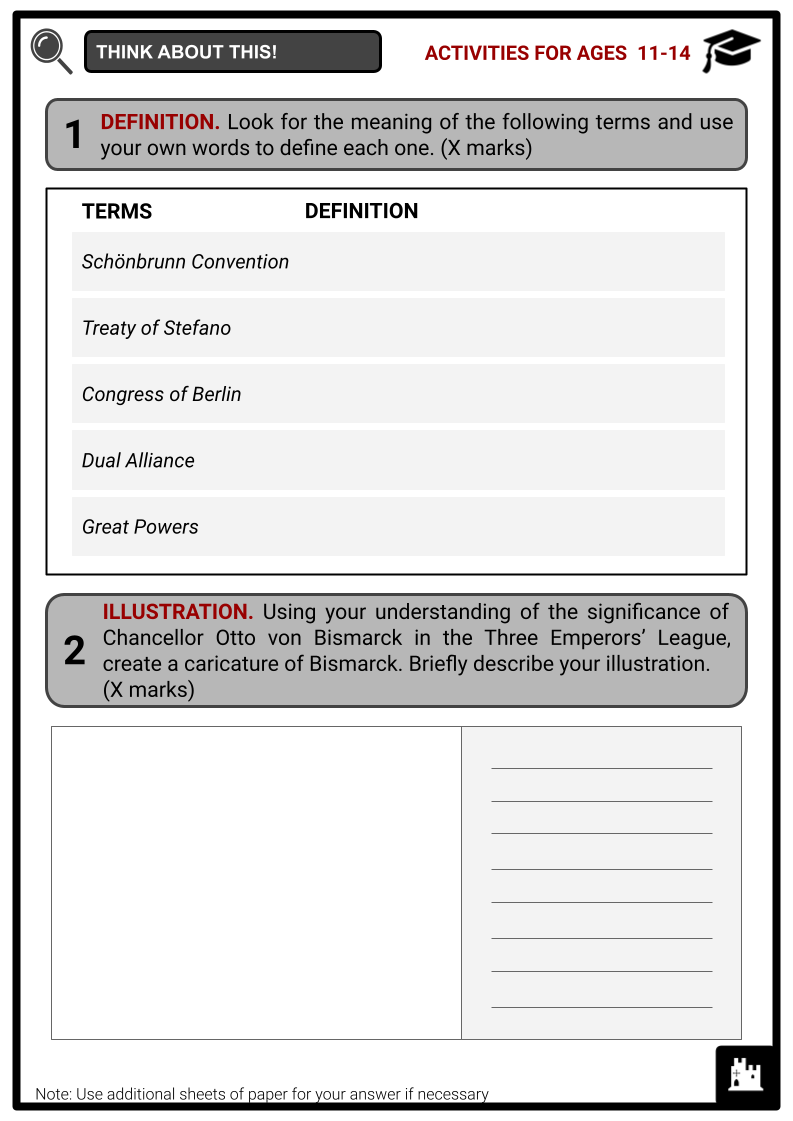
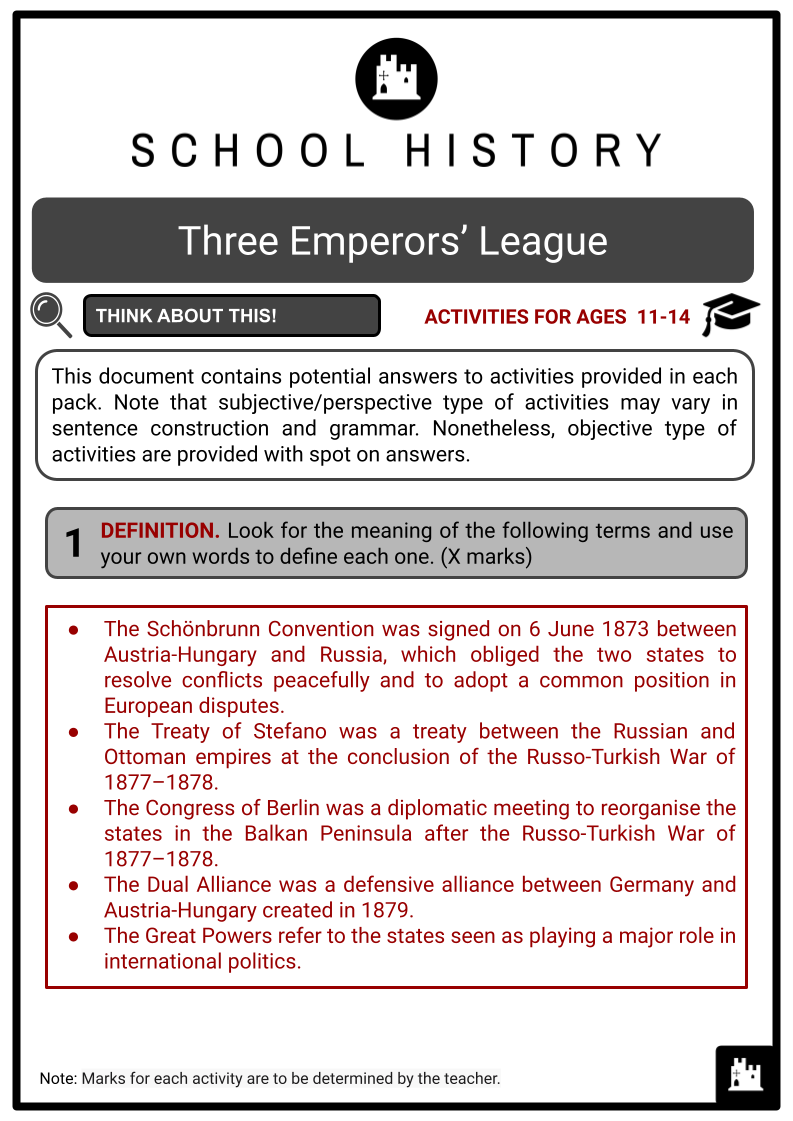
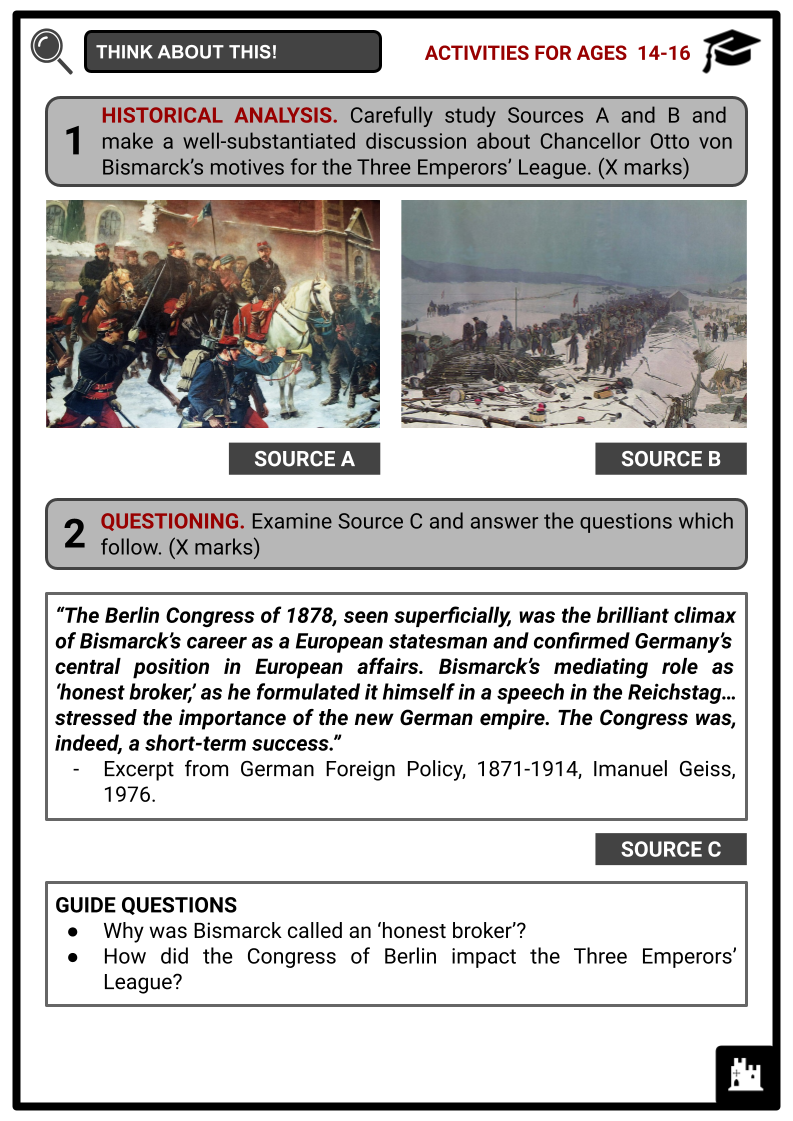
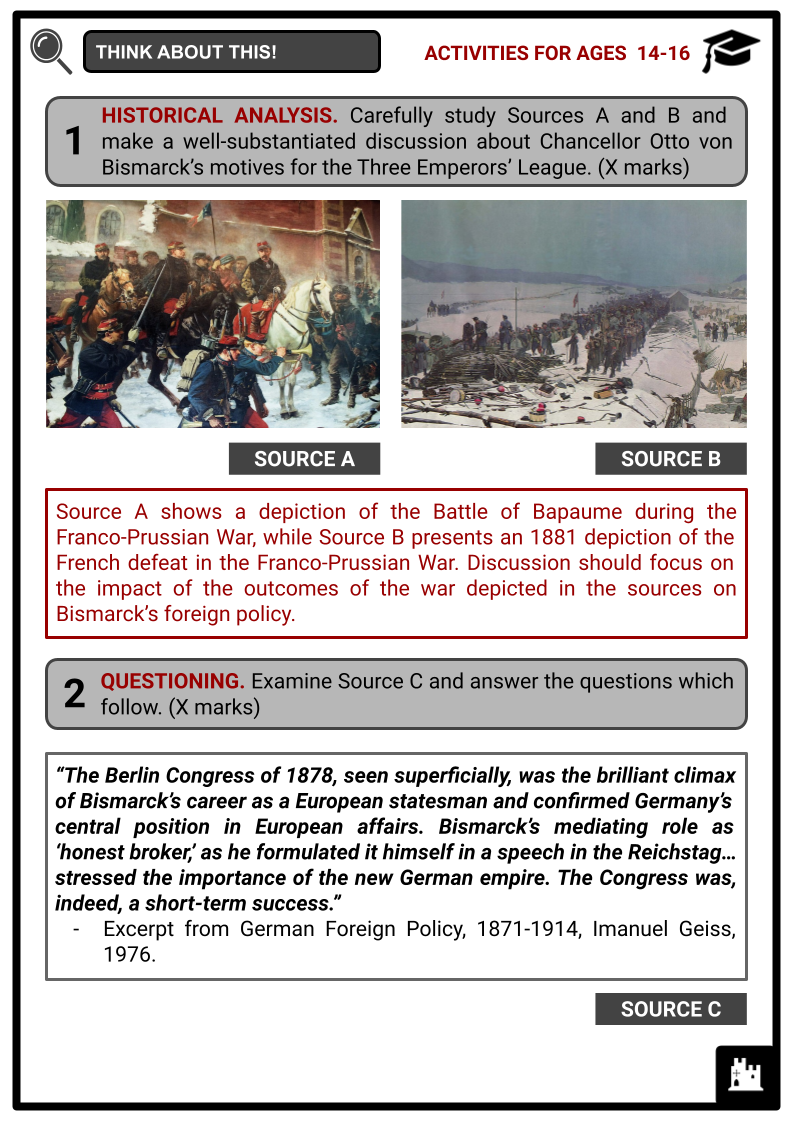
Summary
- First agreement and dissolution
- Revival and collapse
Key Facts And Information
Let’s know more about the Three Emperors’ League!
Following the formation of the German Empire, Chancellor Otto von Bismarck aimed to uphold peace and the balance of power in Europe. He negotiated the Three Emperors’ League, also referred to as the Dreikaiserbund, in 1873 with the intention to isolate France and neutralise the rivalry between Austria-Hungary and Russia. The League was dissolved in 1878 and renewed as a more formal alliance in 1881. It lapsed in 1887 and was ultimately abandoned after the Balkan crisis led Russia to back away from negotiations of the alliance’s renewal.
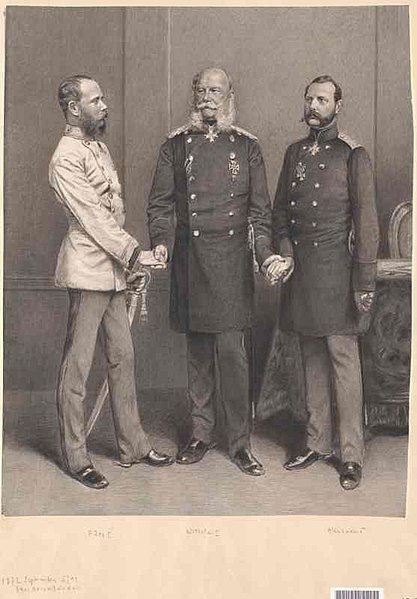
First agreement and dissolution
- In January 1871, the German Empire was founded when most of the southern German states joined the North German Confederation. In April, its new constitution came into force, which changed the name of the federal state to the German Empire and introduced the title of German Emperor for Wilhelm I, King of Prussia. Meanwhile, Otto von Bismarck, Minister-President of Prussia, who took the lead in uniting all of Germany, became Chancellor. Bismarck, as the head of government, took full charge of German foreign policy.
- After 1871, Bismarck’s foreign policy took a departure from his bold approach for Prussia and focused on aiming to uphold the balance of power in Europe.
- Moreover, he was mainly concerned about France’s actions after it was defeated in the Franco-Prussian War (1870–71).
- As France was left with no allies, he feared that the French would enter into an alliance, particularly with Austria-Hungary and Russia, which would put Germany in a dangerous position.
- It was against this background that Bismarck thought that Germany would be secured through an alliance, and so negotiated an agreement.
- In September 1872, Emperor Wilhelm I of Germany, Tsar Alexander II of Russia and Emperor Franz Joseph I of Austria convened to deliberate on a strategic alliance.
- This was followed by the Schönbrunn Convention signed on 6 June 1873 between Austria-Hungary and Russia, which obliged the two states to resolve conflicts peacefully and to adopt a common position in European disputes.
- On 22 October, the German Empire acceded to this agreement, hence the Three Emperors’ League, also called the Dreikaiserbund, was formed.
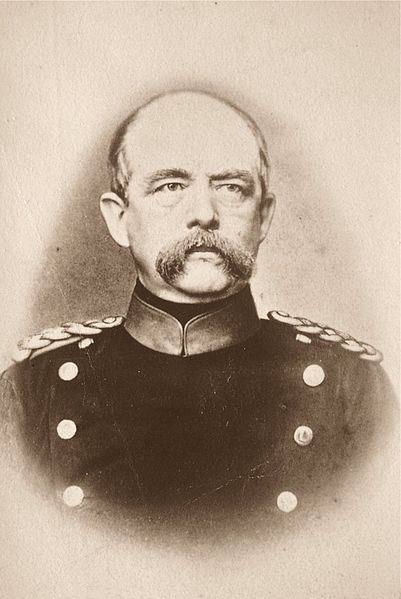
What were Bismarck’s main motives for this alliance?
-
- The League was a logical union of conservative ideals in opposition to disruptive forces.
- The League ensured that France would remain isolated, since neither Austria-Hungary nor Russia was available as an ally.
- The League neutralised the rivalry between Austria-Hungary and Russia over their respective spheres of influence in the Balkans.
- Bismarck often assumed the leadership of the League in assessing challenges, focusing on preserving the balance of power among the states involved and Europe as a whole.
- The League also actively opposed the widening of influence of radical socialist bodies, as they were considered a threat to regional stability and dominance.
- Moreover, the League was faced with the crisis in Eastern Europe in 1876, in which the Bulgarian uprising in the Ottoman Empire was suppressed fiercely by irregular Ottoman troops. The Ottoman atrocities shocked observing states and caused a public outcry across Europe.
- Another conflict arose in the late 1870s that significantly impacted the League: the Russo-Turkish War (1877–78) culminated in the Treaty of Stefano, allowing Russia to expand its influence. This outraged Austria-Hungary.
- Bismarck called the Congress of Berlin to sort out the issue and to preserve the League in the face of the spread of European liberalism. As a result, Russia’s gains from the war were reversed and Austria was compensated in the form of Bosnia.
- Relationships between Germany and Russia soon deteriorated, and the League saw its first dissolution. This gave way to the defensive Dual Alliance (1879) between Austria-Hungary and Germany in order to counter potential Russian aggression.
Revival and collapse
- Bismarck remained hopeful that Russia would renew good relations with Germany, as he was aware of Russia’s key role in European diplomacy. He sought to restore the League in 1881 in order to deter revolutionary forces in Europe. A more formal alliance, the Treaty of the Three Emperors, was finalised on 18 June, with the same signatories for Germany and Austria-Hungary, but with the new Tsar Alexander III of Russia.
What were the articles of the Treaty of the Three Emperors?
- In case one of the high contracting parties should find itself at war with a fourth Great Power, the two others shall maintain towards it a benevolent neutrality and shall devote their efforts to the localisation of the conflict.
- Russia, in agreement with Germany, declares her firm resolution to respect the interests arising from the new position assured to Austria-Hungary by the Treaty of Berlin.
- The three Courts recognise the European and mutually obligatory character of the principle of the closing of the Straits of the Bosporus and of the Dardanelles, founded on international law, confirmed by treaties, and summed up in the declaration of the second Plenipotentiary of Russia at the session of 12 July of the Congress of Berlin.
- The present treaty shall be in force during a period of three years, dating from the day of the exchange of ratifications.
- The high contracting parties mutually promise secrecy as to the contents and the existence of the present treaty, as well as of the protocol annexed thereto.
- The secret conventions concluded between Austria-Hungary and Russia and between Germany and Russia in 1873 are replaced by the present treaty.
- The ratifications of the present treaty and of the protocol annexed thereto shall be exchanged at Berlin within a fortnight, or sooner if may be.
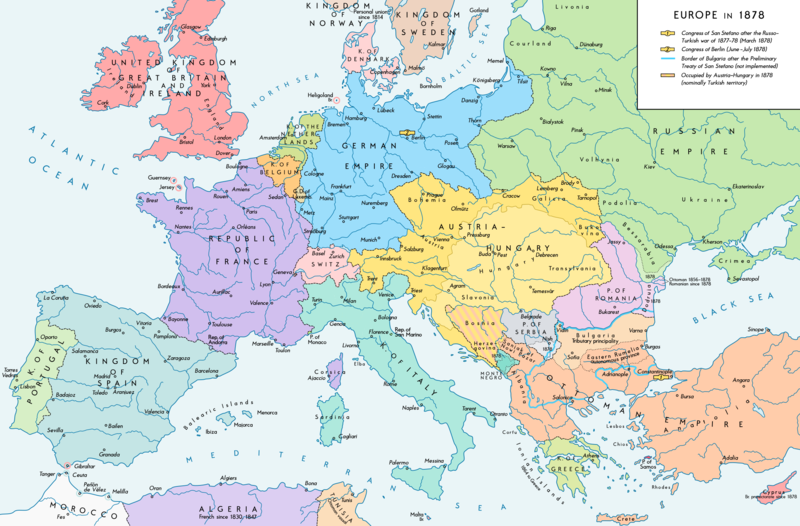
- The renewal of the alliance proved to be significant to Germany because it meant that Bismarck would not have to choose between Austria-Hungary and Russia in the immediate future.
- On the other hand, Russia was no longer isolated diplomatically by its neighbouring states.
- In 1884, the League was renewed at Skierniewice with the same terms.
- Keeping the peace in the Balkans was key to the survival of the League. However, the situation in the Balkans soon shattered this peace.
- The Bulgarian Crisis in the 1880s considerably impacted the League, with Austria-Hungary supporting Serbia and Russia backing Bulgaria. War between the two Great Powers appeared imminent.
- In November 1886, Bismarck, now anxious about the conflict between his allies, sought to prevent war and suggested that Austria-Hungary and Russia divide the Balkans into two parts: Austria-Hungary should take Serbia and Russia should occupy Bulgaria.
- He maintained his neutrality and declined to aid either side. Consequently, Russia became hostile to both Germany and Austria-Hungary.
- By this time, Russia backed away from negotiations of another renewal of the League. The League lapsed in 1887.
- Bismarck was determined to maintain some form of alliance with Russia and arranged for the mutual Reinsurance Treaty in great secrecy in June, under which the two states promised neutrality unless Germany launched a military incursion into France or Russia attacked Austria-Hungary. This secured Germany, as a joint Russian-French attack was prevented.
Image Sources
- https://upload.wikimedia.org/wikipedia/commons/thumb/c/c8/Dreikaiserabkommen_Schoenbrunn_22._Oktober_1873.jpg/417px-Dreikaiserabkommen_Schoenbrunn_22._Oktober_1873.jpg?20191022224820
- https://upload.wikimedia.org/wikipedia/commons/thumb/e/e5/General_Otto_von_Bismarck.jpg/401px-General_Otto_von_Bismarck.jpg?20121122111435
- https://upload.wikimedia.org/wikipedia/commons/thumb/0/05/Europe_1878_map_en.png/800px-Europe_1878_map_en.png
Frequently Asked Questions
- What was the Three Emperors' League?
The Three Emperors' League was a diplomatic alliance formed in 1873 between Germany, Austria-Hungary, and Russia. It aimed to maintain stability in Europe and secure the status quo in their respective regions.
- Why did the Three Emperors' League form?
The alliance was formed in response to the diplomatic isolation of Germany after the Franco-Prussian War. The three emperors sought to counterbalance the power of France and prevent potential conflicts in Eastern Europe.
- Who were the three emperors in the alliance?
The three emperors were Wilhelm I of Germany, Franz Joseph I of Austria-Hungary, and Alexander II of Russia.
